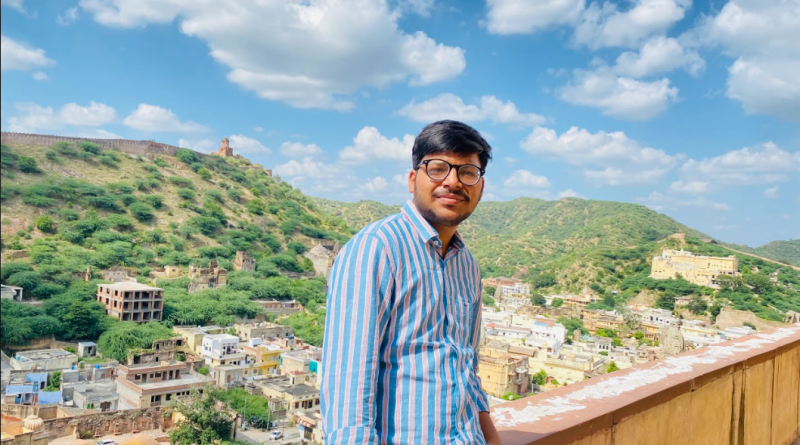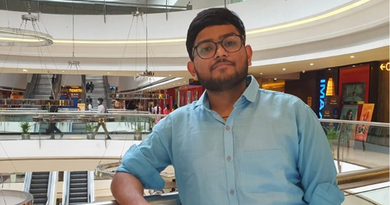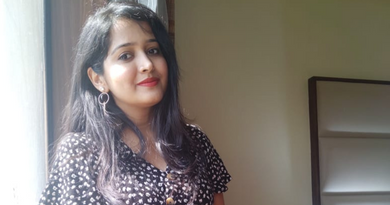Internship in Lahore at Millat Equipment – A closer look at production engineering

About the Author: Fahad Hussain, a student of University of Engineering and Technology, Taxila, Pakistan, talks about his internship experience in Lahore and how it helped him understand the nitty-gritty of production and maintenance processes in the engineering industry.
In my sophomore year, I had no intentions of giving up my summer vacations for an internship program. I had no idea whatsoever as to what I would do in an internship. To clear our minds about the vast opportunities an internship offers, a session was conducted by the council body of the college. It was there in that session that I decided to give it a chance. My career goal was to become a design engineer. So I started looking for internships in the design field. To my despair, I couldn’t find any relevant ones. I talked to some of my professors and they suggested that I should join an internship in the production field as an alternative. According to them, one should have a sound knowledge of production and processes before designing any product. This was the first lesson I learned from my internship related endeavours! So, I started applying for internships in production engineering that were advertised by the placement cell. After shortlisting the companies, I sent my CV to their HR departments for further processing.
After a week or so, I started getting responses – some companies offered internship right away on the basis of my CGPA and resume, while others arranged for an interview first. I was terrified of the interviews back then, so I decided to join the internship that was offered without any interview. When I look back at my decision now, I feel stupid and embarrassed at my decision. Had I been to some of the interviews at that time, I would have become a little more prepared for the interviews that followed after my graduation. This was the second lesson I learned from my internship hunting experience. Anyhow, the exams ended and the first day of internship approached sooner than I had wanted. I started my internship at Millat Equipment Limited, Lahore, one of the pioneers in manufacturing of tractor transmission parts including gears, shafts, pinions, and couplers. I reached the factory and saw that some of the other interns were waiting in the guest room. After an eternity of waiting, the orientation finally started. One of the senior engineers of the plant introduced us to the company and its rules and regulations. She briefed us about the working of the company, both in management and manufacturing areas. Then she handed us over to plant engineers for a brief tour of the factory. After the visit, we were gathered in the common hall for further proceedings. We were all assigned different departments. Our internship routine schedule was provided to us by the HR personnel and we were allowed to either visit the plant further or leave the factory for the day. I enjoyed my first day as we took a tour of the production facility, saw products being manufactured, interacted with other interns, and enjoyed the refreshments provided by the company.
We were supposed to mark attendance at the start of each day, and being late was not the behaviour that was tolerated. Next day, after the attendance, we were directed to our assigned departments. Department heads greeted us and introduced us to the staff members. After that, one of the staff members gave us a brief orientation of the department. My first department was ‘production’, and I was sent to the production floor for in-depth knowledge of production machinery and processes. The production line supervisors were very cooperative with the interns. Since there were many production lines, all the interns in production department were shuffled between the production lines to cover more work in less time and with better understanding. I learned about machines, how they worked in real time, the most common problems that might occur during operations, the safety procedures for operating machines, which machine was better for a specific operation, effects of machine selection on the product, seamless transfer of products from one machine to another, etc. I also learned about the products, processes which were best for producing a specific feature, how the processes affected the properties of the product, how some processes were utilized to intentionally change the properties of the product’s material, and which tools were appropriate for specific materials of the product. I spent the whole day with the line supervisor and was overwhelmed with all the information. I recorded everything, as much as I could, in my diary for future use. After getting back from the factory, I transferred the day’s work from my diary into my laptop for safe keeping. The whole week was dedicated for the production floor and I kept visiting various product lines. I watched all processes keenly and questioned the line workers and supervisors to clarify any confusion or question that arose in my mind. I learned a lot about various production related tasks like line balancing, time study, batch calculations, production plans, master schedules, etc.
After a hectic week in the production department, I was assigned to the maintenance department. I only knew a little about maintenance that it was related to repairing of faulty or damaged equipment. During the next three days, I learned how the equipment was maintained properly, how the frequency of maintenance was decided, how damage to the equipment could be avoided by implementing the preventive maintenance system, and how maintenance improved safety. After that, we moved to more sophisticated ideas like Total Productive Maintenance (TPM). I learned how maintenance was intertwined with production and quality, how it could help make the production processes better, how it could help reduce defect rate, how it, directly and indirectly, affected the quality of the product, and how it improved Original Equipment Efficiency (OEE). As a final learning milestone, we were teamed with the maintenance personnel working on a PLC controlled gear hobbing machine. The sensors of the machine were not working properly and required maintenance. We observed keenly while the mechanic disassembled the defective portion of the machine, replaced the faulty parts, and reassembled the machine. The machine was then tested to check if the problem was solved. With that being done, our work in maintenance department was over. As a bonus, a classroom session was conducted under the supervision of HSE (Health, Safety, and Environment) department, where we were briefed about workplace safety guidelines, PPEs (Personal Protective Equipment), firefighting, and the environmental regulations regarding use and disposal of industrial materials in a safe and environmentally friendly manner.
After the HSE session, we were assigned mini projects in the industry and given free hand to complete the projects as we see fit. All the company resources were at our disposal and we were allowed to take help from whoever we needed. I was given a rather theoretical study project than a practical one. I had to perform a detailed study on the Compressed Air Systems and find various ways to improve the efficiency of such systems. I did the research to the best of my abilities and prepared a report with details. Then I was asked to recommend some of the methods that I had mentioned in the report for improving the systems currently being used in the industry. I teamed up with the energy efficiency improvement team of the company and devised some methods that were fit to be implemented.
Few improvements that I suggested were:
1. Location of the compressor intake. The compressor location was designed quite a while ago. There had been recent construction near the compressor causing hindrance for the air intake of the compressor. Relocation of intake duct opening would have also helped against the temperature increase due to the compressor itself. The surrounding environment of the compressor was hot and the air was at a higher temperature around the compressor. This caused lower volumetric efficiency and higher power consumption of the compressor.
2. The air filter of the compressor was not as per requirement. So I recommended changing the filter as well. The pressure settings of the compressor were also not optimal. The compressor was running at a higher pressure than required by the system consumption points, causing more power consumption and loss of efficiency.
3. Another suggestion was to segregate low and high-pressure consumption points and feed different lines to both networks. This practice would have reduced the pressure drops and losses along the network due to pressure difference issues. It would have also reduced the compressed air lost at lower pressure requirement points along the network.
4. The last improvement I suggested was to improve the elevation of the compressor and the delivery points. Compressors work with lesser power consumption if installed at lower elevations. Similarly, the efficiency of the compressed air system can be improved if the difference in elevation between the compressor and the delivery points is minimum.
I submitted my recommendations along with my final internship report which was accepted. In the end, a certification ceremony was organised where the whole senior management was present. The HR manager handed the certificates to the interns by calling them on the stage one by one and asked everyone to share their internship experience with the management. He also asked for recommendations to improve the internship program for the next time. This internship proved to be one helluva learning-packed experience!
Confused about whether you are a good fit for the industry? Apply to these cool mechanical engineering internships and gain an insight on how the real industry works!
Editor’s note – If you also have an interesting story to share, you can now participate in Your Internship Story Contest 2017 and win cash prizes and goodies worth INR 1 Lac!



